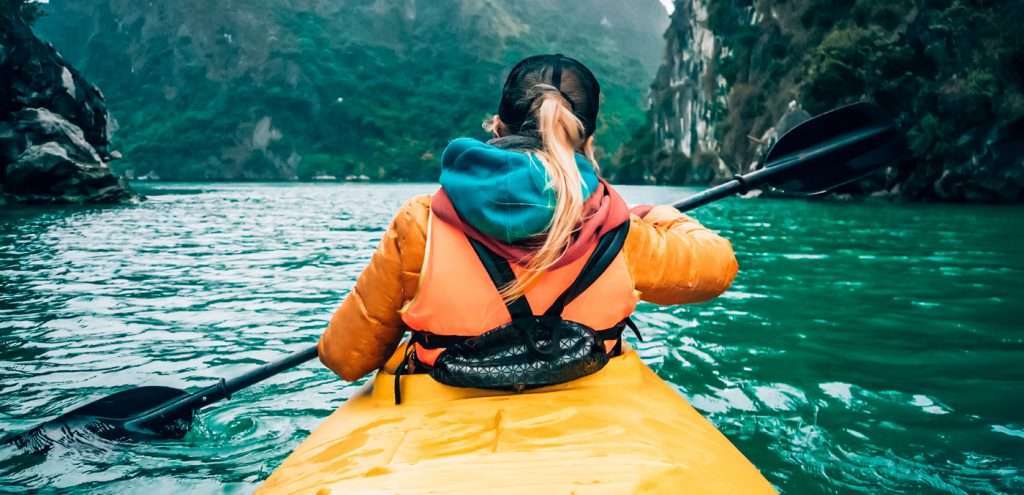There are a variety of injuries that can occur while canoeing or kayaking. The most common types of injuries include shoulder, wrist, impact, dehydration, sunburn, hypothermia and drowning.
Shoulder Injury
One of the most common canoeing and kayaking injuries is a shoulder injury. This occurs when the rotator cuff muscles and tendons become overloaded from repetitive rowing motions. Shoulder pain may also be caused by poor posture or incorrect rowing technique. To prevent this type of injury, it is important to maintain good posture and use proper rowing technique. Strengthening the rotator cuff muscles with exercises such as dumbbell shrugs can also help to prevent shoulder injuries.
Wrist Injury
Wrist injuries are also common in canoeing and kayaking. These occur when the wrist is placed in an awkward position for extended periods of time. The most common type of wrist injury is tendinitis, which is inflammation of the tendons. Carpal tunnel syndrome can also develop from repetitive rowing motions. To prevent these types of injuries, it is important to take breaks often and stretch the wrists and hands regularly. Wearing a splint or brace on the affected hand can also help to reduce pain and swelling.
Impact Injury
An impact injury occurs when you hit your head or body against something hard, such as rocks or trees. Impact injuries can range from mild concussions to more serious skull fractures or internal bleeding. Always wear a helmet while canoeing or kayaking to protect yourself from hitting your head in case you capsize (flip over). It is also important to avoid paddling near rocky areas where there is a risk of collision with objects underwater.
Dehydration
Canoeing and kayaking require a lot of physical activity, so it’s important to stay hydrated while participating in these activities . Dehydration can cause cramps, dizziness , fatigue , headache s ,nausea, and heat stroke . Heat stroke is especially dangerous because it can lead to death if not treated immediately.
To prevent dehydration, drink plenty of fluids and take breaks often in shady areas to rest and cool down. Wear light-colored clothing made from breathable fabrics such as cotton to help keep your body temperature cool. Avoid drinking alcoholic beverages while canoeing or kayaking since alcohol promotes dehydration .
Sunburn Injury
Canoeing and kayaking expose you to the sun’s harmful ultraviolet (UV) rays, which can cause sunburn, skin cancer , and premature aging of the skin . To protect yourself from these risks, it is important to wear sunscreen with an SPF of at least 15 every time you go outside.
The Skin Cancer Foundation recommends SPF 15 every day you leave your house and SPF 30 if you plan to be in the sun most of the day
https://www.skincancer.org/skin-cancer-prevention/sun-protection/sunscreen/
Apply sunscreen generously over all exposed skin including the face , neck , ears , hands ,and legs . Reapply sunscreen every two hours or more frequently if you are sweating or swimming. Seek shade whenever possible during midday hours when UV radiation is strongest. Wearing long-sleeved shirts and pants made from tightly woven fabric can also provide some protection against UV rays.
Hypothermia
Hypothermia occurs when your body loses heat faster than it can produce heat leading to a drop in core body temperature below 95° F . Symptoms of hypothermia include confusion , drowsiness ,feelings of coldness in extremities ,goose bumps, shivering, slurred speech, and stumbling . If not treated immediately, hypothermia can lead to death.
To prevent hypothermia while canoeing or kayaking , wear clothing made from synthetic materials such as polypropylene or wool which provide insulation even when wet. Avoid cotton clothing since it absorbs water and loses its insulating properties when wet. Dress in layers so that you can remove clothes if you start to feel too warm and put them back on if you start to feel cold again.
Drowning
According the Centers for Disease Control and Prevention (CDC), drowning is one of the leading causes of unintentional injury death in the United States. Children ages 1-4 have the highest rates of drowning deaths followed by adolescents 15-19 years old . The majority of drownings occur during May through August with more than half taking place at natural bodies of water such as lakes , rivers, and oceans . Drowning risk increases with alcohol use since it impairs judgment and coordination needed for swimming . Other risk factors include lack of swimming ability , failure to wear life jackets , non-supervised swimming areas, venturing out into deep waters beyond one’s depth, and attempting rescuing someone else without help .
To prevent drowning, always wear a life jacket while canoeing or kayaking. Avoid alcohol use before and during activity. Do not swim in areas that are unsupervised or beyond your depth. If you see someone else struggling in the water, do not attempt to rescue them without help since this puts you at risk of drowning as well .

